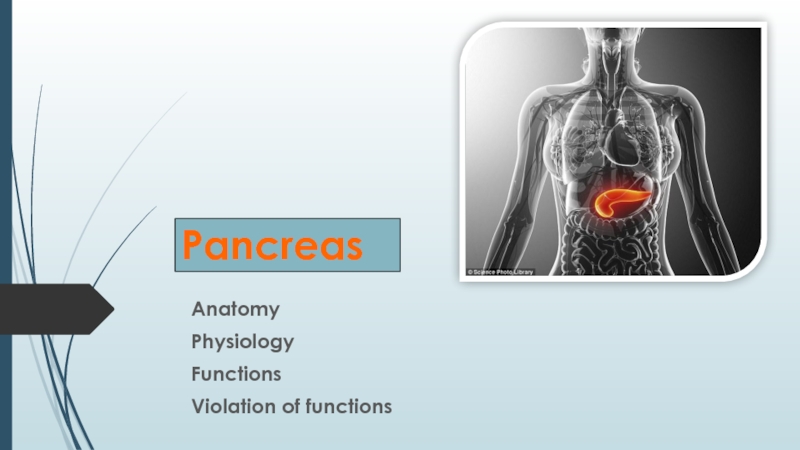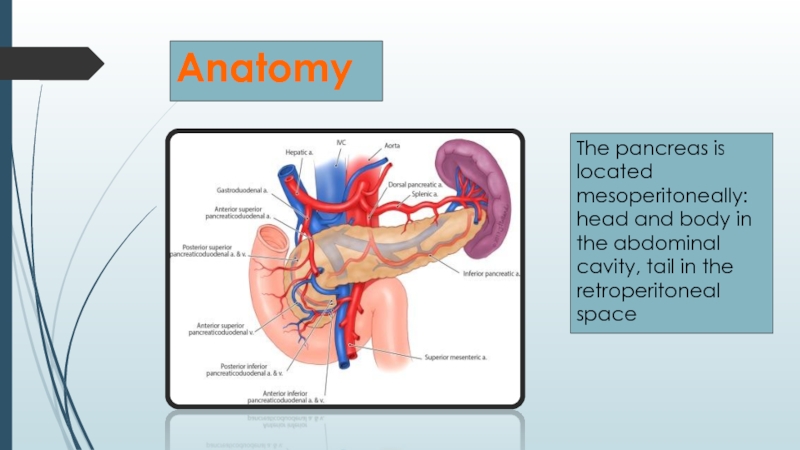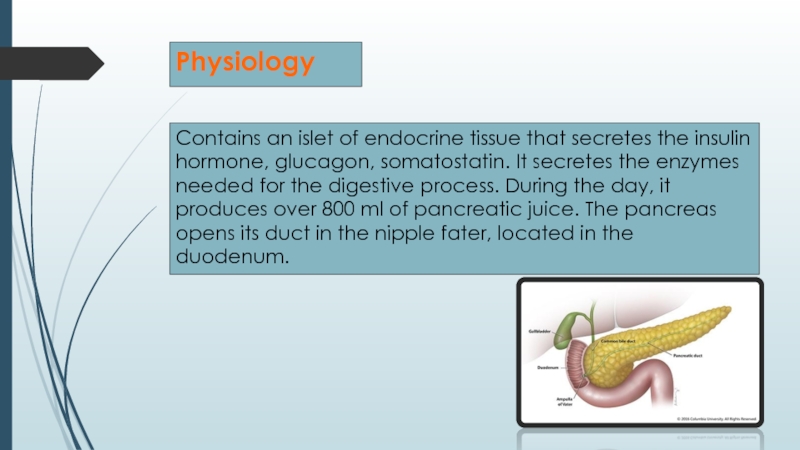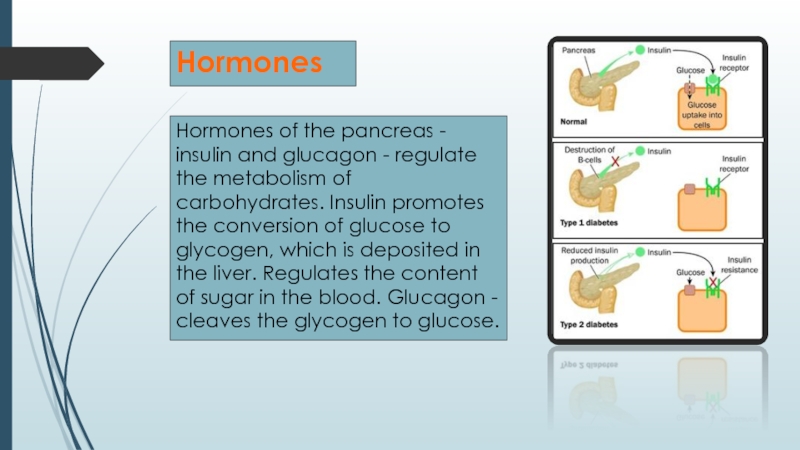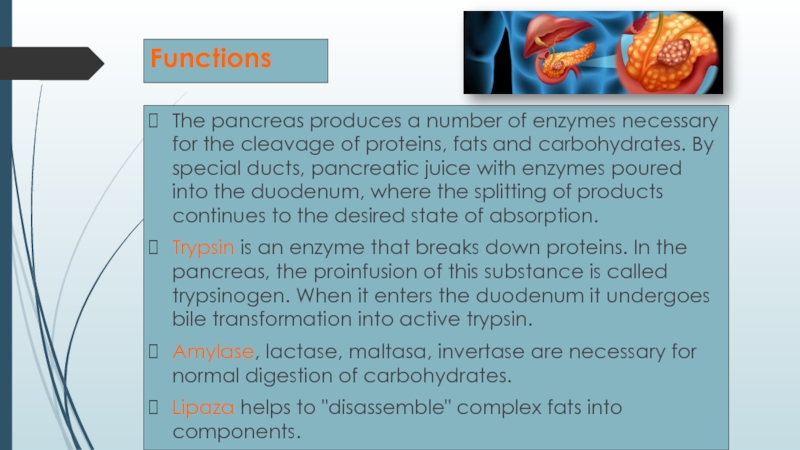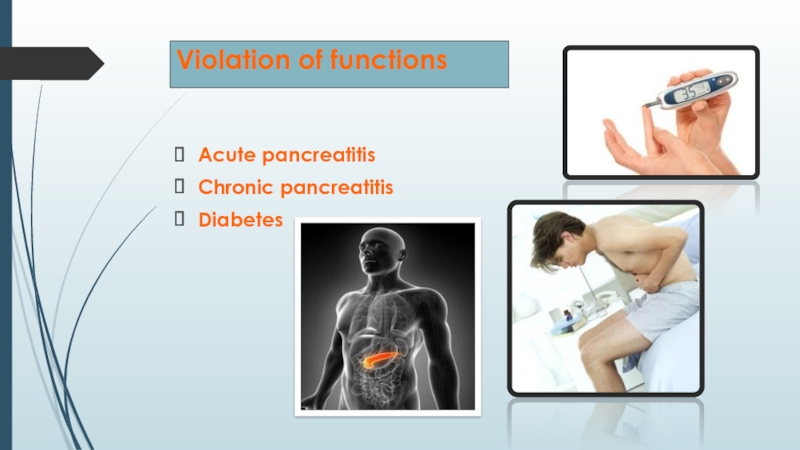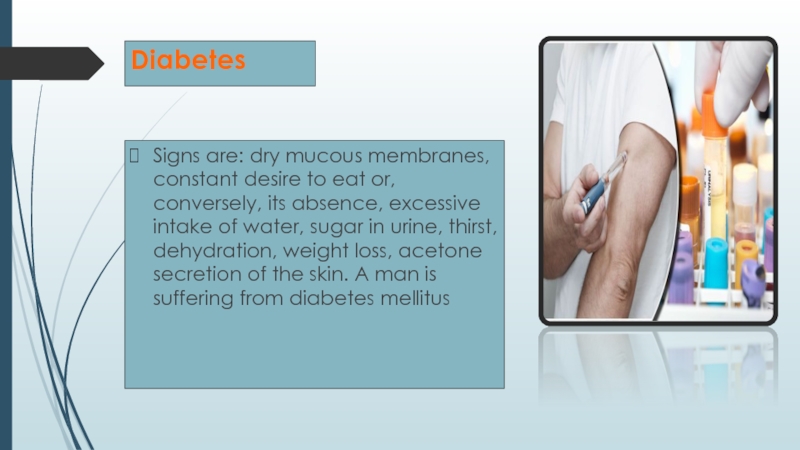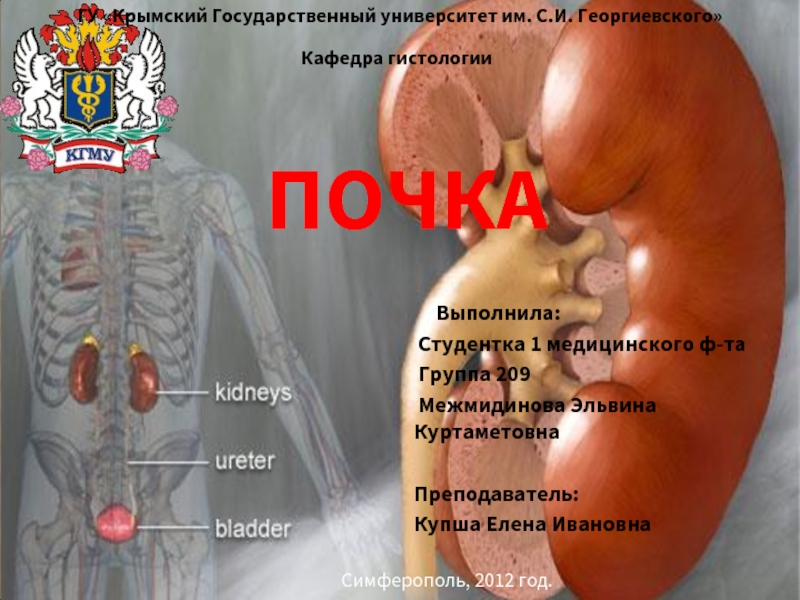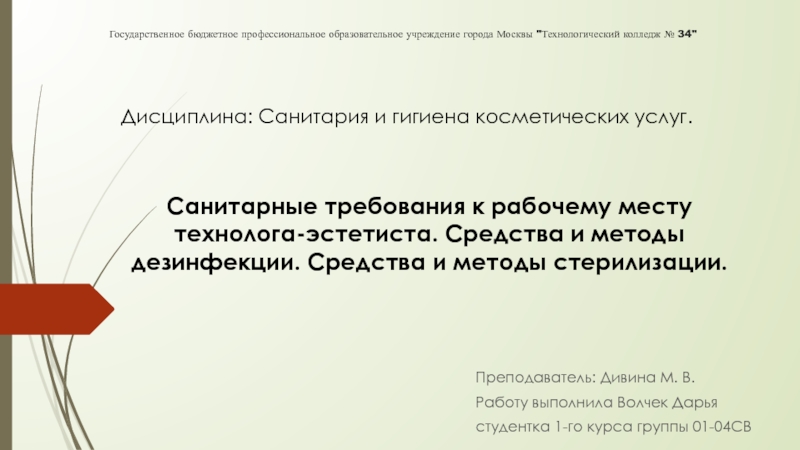- Главная
- Разное
- Дизайн
- Бизнес и предпринимательство
- Аналитика
- Образование
- Развлечения
- Красота и здоровье
- Финансы
- Государство
- Путешествия
- Спорт
- Недвижимость
- Армия
- Графика
- Культурология
- Еда и кулинария
- Лингвистика
- Английский язык
- Астрономия
- Алгебра
- Биология
- География
- Детские презентации
- Информатика
- История
- Литература
- Маркетинг
- Математика
- Медицина
- Менеджмент
- Музыка
- МХК
- Немецкий язык
- ОБЖ
- Обществознание
- Окружающий мир
- Педагогика
- Русский язык
- Технология
- Физика
- Философия
- Химия
- Шаблоны, картинки для презентаций
- Экология
- Экономика
- Юриспруденция
Pancreas. Аnatomy. Physiology. Functions. Violation of functions презентация
Содержание
- 1. Pancreas. Аnatomy. Physiology. Functions. Violation of functions
- 2. Аnatomy The pancreas is located mesoperitoneally:
- 3. Physiology Contains an islet of endocrine
- 4. Hormones Hormones of the pancreas - insulin
- 5. Functions The pancreas produces a number
- 6. Violation of functions Acute pancreatitis Chronic pancreatitis Diabetes
- 7. Diabetes Signs are: dry mucous membranes,
- 8. Thank you for attention
Слайд 2Аnatomy
The pancreas is located mesoperitoneally: head and body in the abdominal
cavity, tail in the retroperitoneal space
Слайд 3Physiology
Contains an islet of endocrine tissue that secretes the insulin hormone,
glucagon, somatostatin. It secretes the enzymes needed for the digestive process. During the day, it produces over 800 ml of pancreatic juice. The pancreas opens its duct in the nipple fater, located in the duodenum.
Слайд 4Hormones
Hormones of the pancreas - insulin and glucagon - regulate the
metabolism of carbohydrates. Insulin promotes the conversion of glucose to glycogen, which is deposited in the liver. Regulates the content of sugar in the blood. Glucagon - cleaves the glycogen to glucose.
Слайд 5Functions
The pancreas produces a number of enzymes necessary for the cleavage
of proteins, fats and carbohydrates. By special ducts, pancreatic juice with enzymes poured into the duodenum, where the splitting of products continues to the desired state of absorption.
Trypsin is an enzyme that breaks down proteins. In the pancreas, the proinfusion of this substance is called trypsinogen. When it enters the duodenum it undergoes bile transformation into active trypsin.
Amylase, lactase, maltasa, invertase are necessary for normal digestion of carbohydrates.
Lipaza helps to "disassemble" complex fats into components.
Trypsin is an enzyme that breaks down proteins. In the pancreas, the proinfusion of this substance is called trypsinogen. When it enters the duodenum it undergoes bile transformation into active trypsin.
Amylase, lactase, maltasa, invertase are necessary for normal digestion of carbohydrates.
Lipaza helps to "disassemble" complex fats into components.
Слайд 7Diabetes
Signs are: dry mucous membranes, constant desire to eat or, conversely,
its absence, excessive intake of water, sugar in urine, thirst, dehydration, weight loss, acetone secretion of the skin. A man is suffering from diabetes mellitus
